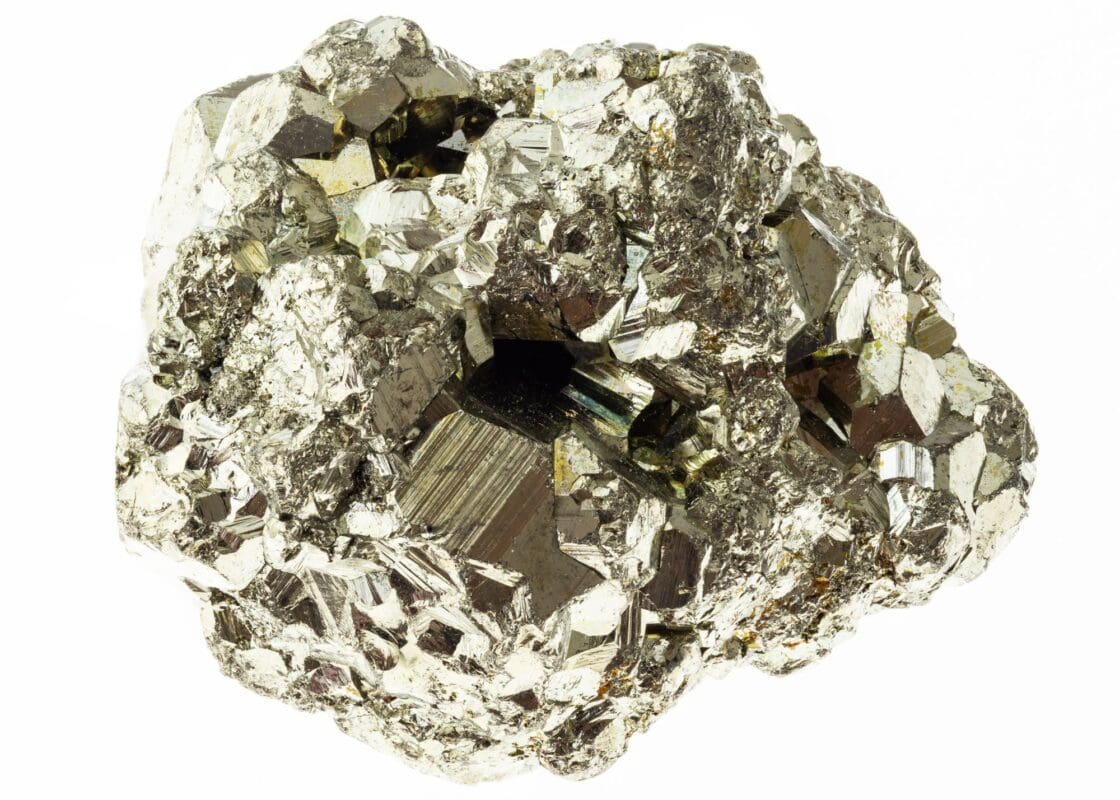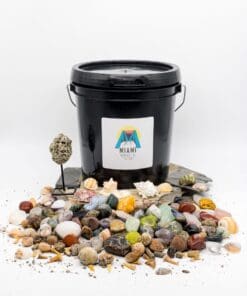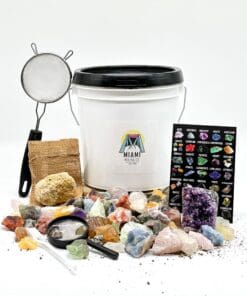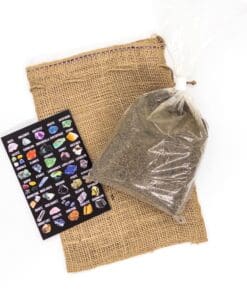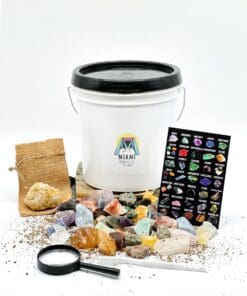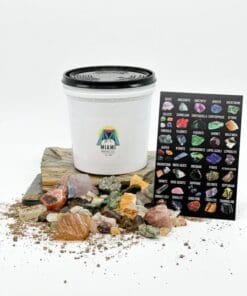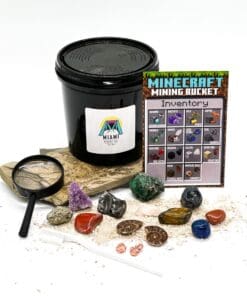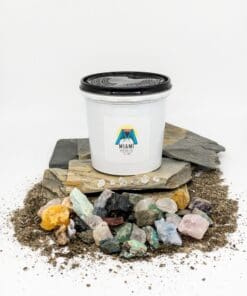Gem Mining Kansas: The Ultimate Explorer’s Guide to the State’s Rich Mineral Heritage
Kansas, often hailed as the heartland of America, has more to offer than just sweeping plains and agricultural prowess. Nestled beneath its soil lies a shimmering world of gemstones, waiting to be discovered. Gem mining in Kansas is not just a pastime—it’s an adventure, an opportunity to connect with nature, and a chance to find a tangible piece of the state’s geological history. This article dives deep into the captivating realm of gem mining in Kansas, guiding you through its rich history, locations, and giving you expert tips to make your treasure hunting experience in Kansas a memorable one.
The Most Popular Gemstones in Kansas
Kansas’s diverse geological formations provide a rich tapestry of gemstones. Whether you’re seeking the rarest of gems or the more commonly found treasures, the Sunflower State has plenty to offer. Let’s delve deeper into the gemstones that you can uncover in Kansas:
Table 1: Rare Gemstones in Kansas
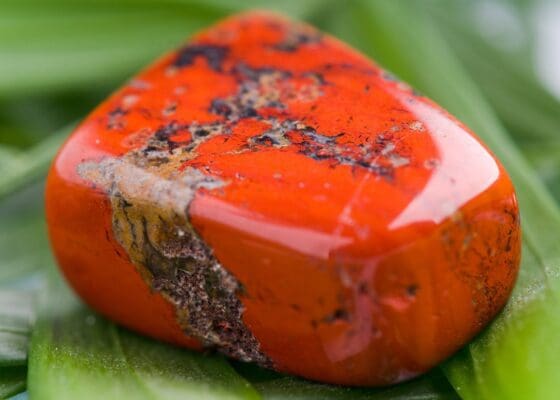

| Gemstone | Description |
|---|---|
| Chalcedony | A microcrystalline variety of quartz, chalcedony in Kansas can sometimes exhibit bands, creating what’s known as agate. |
| Jasper | This opaque variety of quartz comes in various shades, from red to yellow, and is often found in the form of nodules. |
| Galena | An intriguing lead ore, galena is known for its silvery metallic luster and high density. |
| Pyrite | Also known as “fool’s gold” for its gold-like appearance, pyrite is an iron sulfide mineral that forms in cubes or multifaceted crystals. |
| Zincite | A rare gemstone, zincite is characterized by its vibrant red and orange hues, formed as a result of zinc manufacturing processes. |
Table 2: Common Gemstones in Kansas
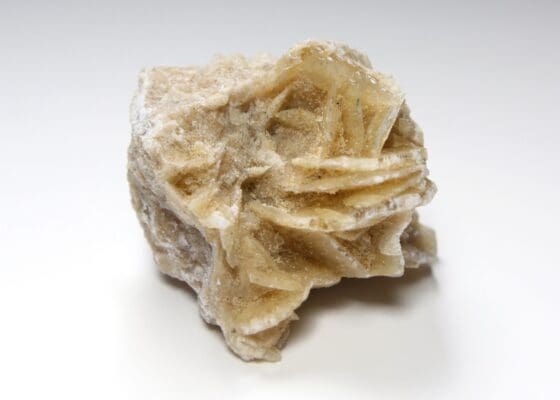

| Gemstone | Description |
|---|---|
| Quartz | The most common mineral on Earth, quartz in Kansas can be found in a variety of colors and formations. |
| Feldspar | Often forming the matrix of many rock types, feldspar can be identified by its pinkish hue and two cleavage planes. |
| Mica | Recognizable by its shiny, flaky appearance, mica is a silicate mineral that can be peeled off in thin sheets. |
| Calcite | Often forming in cave systems or sedimentary environments, calcite is a carbonate mineral with a rhombic crystal system. |
| Barite | A dense mineral, barite forms in a variety of environments and can be found in elongated crystals or tabular forms. |
| Dolomite | Similar to calcite but with a distinct curvature on its rhombohedral cleavage faces. |
| Gypsum | A soft sulfate mineral, gypsum can be found in transparent crystals or more commonly as alabaster. |
| Limonite | An amorphous mineral, limonite produces yellow to brown ocher pigments and is often found in bog iron deposits. |
| Kaolinite | A clay mineral, kaolinite is often white but can take on shades of red or brown depending on its iron content. |
| Hematite | Known for its reddish-brown streak and metallic luster, hematite is an iron oxide that is often found in banded iron formations. |
These tables provide a glimpse into the geological richness of Kansas. Whether you’re seeking a simple quartz crystal or hunting for the elusive galena, there’s a gemstone adventure waiting for everyone in the state.
Top Gem Mining Locations in Kansas


- Rock City: Located in Minneapolis, Kansas, this 5-acre park boasts over 200 spherical rock formations. While primarily a geological attraction, visitors often find chalcedony and quartz. The park is open from sunrise to sunset, with a modest entry fee.
- Marquette’s Kanopolis Drive-In: More than just a spot to catch a movie, the area around this drive-in theater is known for its jasper and chalcedony deposits. It’s open year-round, with no specific mining fee, but it’s courteous to make a purchase from their concession.
- Smoky Hill River Area: Stretching across a vast region of Kansas, the riverbanks of the Smoky Hill River are a haven for gem enthusiasts. Feldspar, quartz, and occasionally jasper can be found. There’s no entry fee, but always ensure you’re not on private property.
- Wilson Lake: Nestled in Russell County, Wilson Lake offers opportunities to find quartz and other semi-precious gemstones along its shores. The lake is accessible all year, and while there’s no mining fee, there might be parking or recreational charges.
- Tuttle Creek Lake: Situated in Riley County, the shores and surrounding areas of Tuttle Creek Lake are abundant in quartz and other minerals. Visitors can access the area from dawn to dusk, with no specific mining fees.
- Chase County Mines: This region, characterized by its flint quarries, is a great location to find chert (a type of flint). Some areas might be on private lands, so always seek permission. No standard operating hours or fees apply, as it varies by property.
- Baker’s Wetlands: Located near Lawrence, this wetland area offers a unique gem hunting experience. Limonite and hematite are commonly found here. It’s open from sunrise to sunset, and there’s no entry fee.
- Arkansas Riverbed: Stretching parts of Kansas, the Arkansas Riverbed is a popular location to find barite, gypsum, and even pyrite. Access is free, but visitors should be cautious about water levels and always respect the natural environment.
- Neosho River: Spanning several counties in Kansas, the Neosho River has deposits of calcite, dolomite, and occasionally zincite. Like most riverbeds, it’s open year-round with no fees, but visitors should be wary of potential flooding periods.
- Greenwood County Quarries: These quarries, scattered throughout Greenwood County, are prime spots to find diverse minerals, including mica and kaolinite. Access to specific quarries might require permission, and operating hours or fees can vary based on ownership.
Kansas offers a myriad of locales, each with its unique geological backdrop, to delve into the fascinating world of gem hunting. Whether it’s the calming banks of a river, the vast expanse of a lake, or the intriguing depths of a quarry, the Sunflower State beckons gem enthusiasts to explore and discover its hidden treasures.
History of Gem Mining in Kansas
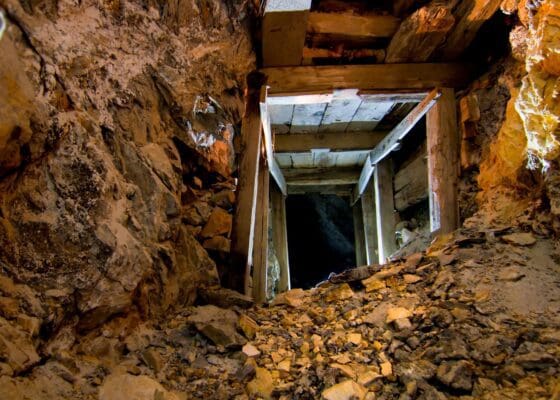

Gem mining in Kansas is as much a journey through time as it is an exploration of the land. The state’s gem and mineral wealth is not the result of chance but a testament to its unique geological history.
Millions of years ago, what we now recognize as Kansas was submerged under the vast Western Interior Seaway. Over time, as waters receded and the landscape underwent transformative shifts, layers upon layers of sediments were deposited. These sediments, under the influence of time and pressure, crystallized into the gemstones that we seek today.
Kansas might not have experienced the classic gem rush akin to the gold rush of California, but it has its tales of gem bonanzas. In the late 19th and early 20th centuries, the discovery of jasper nodules and chalcedony geodes created a stir among local communities. These finds weren’t just economically valuable; they added layers of understanding to the state’s prehistoric narrative, painting pictures of ancient environments and the forces at play.
Furthermore, Kansas’s flint quarries, especially in the Chase County region, have historical significance tracing back to Native American civilizations. These quarries provided materials for tools and weapons, highlighting the intrinsic relationship between humans and the mineral wealth beneath their feet long before modern mining practices.
However, not all of Kansas’s mineral history is rooted in antiquity. The state has witnessed industrial-era mining, especially with the extraction of lead and zinc in the southeastern regions. While primarily focused on the extraction of ores, these operations sometimes resulted in surprising gem finds like galena and zincite.
But perhaps the most charming aspect of Kansas’s gem mining history is its grassroots nature. Families passing down tales of a grandparent’s favorite gem hunting spot, communities coming together for gem and mineral shows, and the sheer joy of a child discovering their first quartz crystal on a school trip encapsulate the spirit of gem mining in the state.
Today, while large-scale commercial gem mining is not prevalent in Kansas, the passion for discovery, fueled by a rich history, continues to inspire both residents and visitors to engage in this timeless pursuit.
Gem Mining Regulations in Kansas


In the heart of the Midwest, Kansas presents an attractive landscape for gem and mineral enthusiasts. However, like many states with a wealth of natural resources, Kansas has established a series of regulations to ensure that gem mining remains sustainable, environmentally responsible, and respectful to land rights. Understanding these regulations is crucial for any hobbyist or professional looking to embark on a gem hunting expedition in the state.
- Private Land Permissions: Much of the land in Kansas is privately owned. Before attempting to mine or collect any minerals on private property, written permission from the landowner is mandatory. Verbal consents are often insufficient and can lead to disputes or legal actions. Keep a signed copy of the permission when on the premises to avoid potential misunderstandings.
- State and Federal Lands: Certain lands in Kansas are protected either by state or federal provisions. Areas like national parks, monuments, or designated historical sites typically prohibit any form of mineral collection. Always check the specific guidelines associated with the area of interest. State parks and public lands may also have their own set of restrictions; therefore, it’s wise to inquire ahead.
- Environment and Ecosystem Protection: Kansas boasts various fragile ecosystems, and gem mining can inadvertently damage these areas. It’s essential to minimize disruption, whether it’s by refraining from using heavy machinery, preventing waterway obstructions, or ensuring that excavations do not endanger local flora and fauna.
- Volume Restrictions: While Kansas doesn’t have a universal limit on the volume of gemstones that can be collected, certain areas may impose their own restrictions to prevent over-extraction. Adhering to these limits not only ensures sustainable collection practices but also helps preserve opportunities for future generations of gem enthusiasts.
- Safety Guidelines: Safety is paramount in any mining endeavor. In Kansas, abandoned mines and quarries pose potential hazards. It’s crucial to be aware of the surroundings, avoid entering unstable areas, and always inform someone about your whereabouts when embarking on a solo expedition.
- Sales and Commercial Exploitation: While casual collection for personal use is generally permitted, converting your finds into commercial ventures can be a regulatory maze. Selling large quantities or setting up a regular sales operation might require permits or licenses.
The beauty of gem hunting lies in the symbiotic relationship between the seeker and the land. Kansas, with its rich mineralogical history, invites all to partake in this journey of discovery. However, it’s of utmost importance that the allure of the gems doesn’t overshadow the principles of responsible and ethical mining. By adhering to regulations and respecting the land, gem mining in Kansas can continue to flourish as both a rewarding pastime and a nod to our natural heritage.
Necessary Tools and Equipment for Gem Mining in Kansas
Embarking on a gem mining adventure in Kansas requires more than just enthusiasm; it’s essential to be equipped with the right tools. The geological diversity of Kansas, with its riverbeds, open plains, and quarries, means that different tools may be needed based on the location and type of gemstone you’re pursuing. Here’s a guide to ensure you’re adequately prepared for your journey:
1. Screening and Classifying Tools: Reveal those hidden treasures!
Description: Particularly useful when hunting in riverbeds or lakes, these screens help separate gems and minerals from sand and mud. Different mesh sizes can refine your search and improve the chances of finding smaller, more delicate gems.


🛒 Explore Top Screening Sets on Amazon
2. Shovels and Trowels: Digging deep or just scratching the surface?
Description: For digging in softer ground or moving aside debris, a sturdy shovel or trowel is essential. This allows you to access deeper layers of soil that might hide gem deposits.


🛒 Find Quality Shovels and Trowels on Amazon
3. Picks and Hammers: The backbone of any gem hunting endeavor.
Description: The cornerstone of any gem hunting toolkit, the geological hammer (or rock hammer) is crucial for breaking open rocks and accessing the mineral treasures within. They’re designed to split rocks cleanly and reveal their internal structures and inclusions.


🛒 Check Out Best Picks and Hammers on Amazon
4. Buckets: Your trusted companion for carrying treasures.
Description: As you uncover gems, you’ll need a safe place to store them. Durable buckets or cloth bags are ideal, ensuring your finds remain undamaged during your expedition.
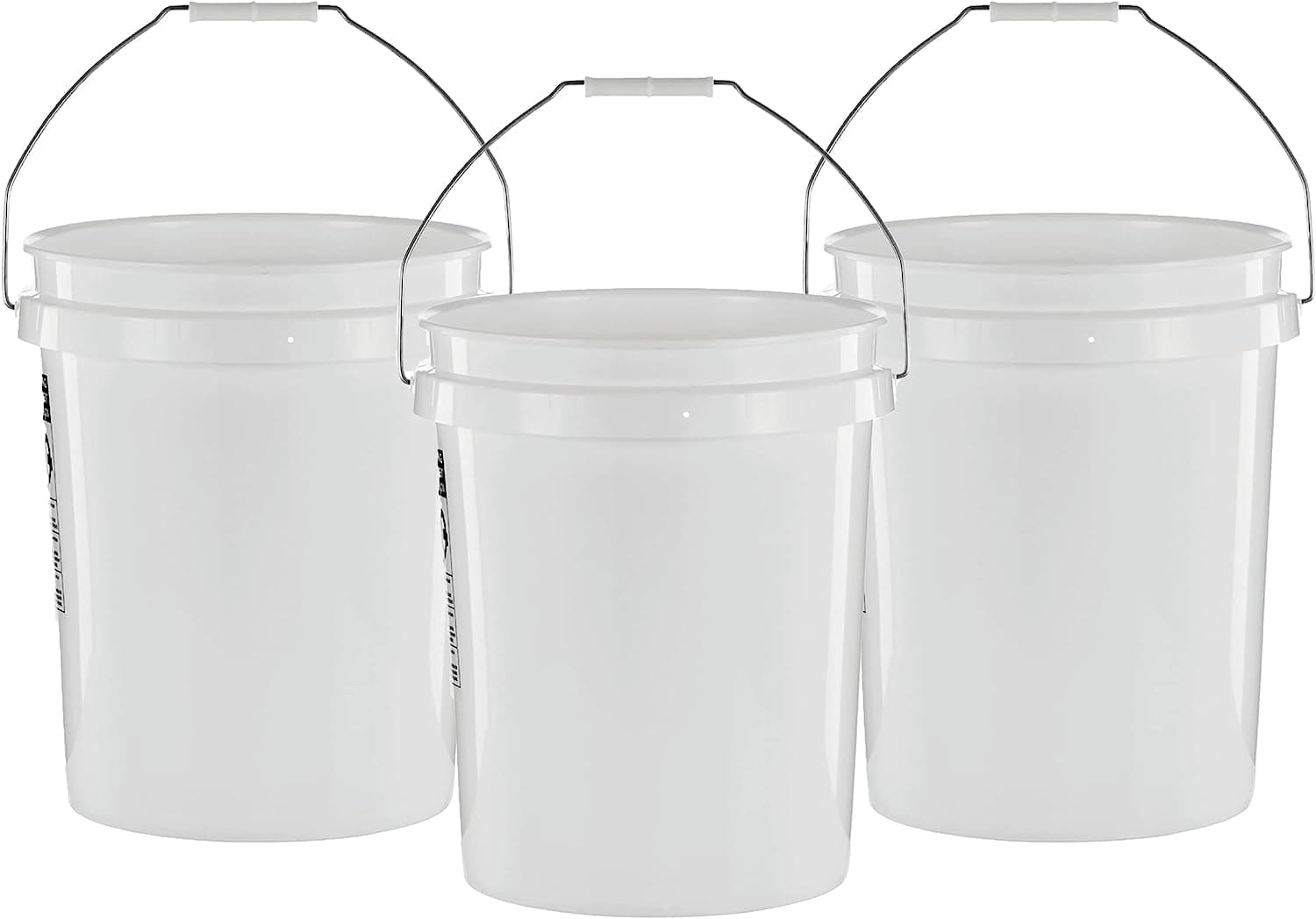

🛒 Shop for Reliable Buckets on Amazon
5. Magnifying Glass: Every detail counts!
Description: This small, portable magnifying glass is instrumental in closely examining potential finds. It can help determine the difference between similarly appearing minerals or spot the tiny details that could indicate a gem’s quality.


🛒 Grab Your Magnifying Glass on Amazon
6. Guidebooks and Field Guides: Knowledge at your fingertips.
Description: A detailed guidebook specific to Kansas minerals and gemstones can be invaluable. It can help you identify and validate your finds, understand where certain minerals might be located, and provide historical and scientific context.


🛒 Discover the Best Field Guides on Amazon
7. Containers and Bags: Organize, store, and flaunt your finds.
Description: As you gather gemstones, having durable bags or buckets ensures safe storage. Labeling them based on location or type of stone can be helpful for post-trip analysis.


🛒 Shop for Storage Solutions on Amazon
8. First Aid Kit: Better safe than sorry!
Description: Minor injuries like scrapes or splinters can happen. Having a basic first aid kit ensures you can address these issues promptly.


🛒 Secure Your First Aid Kit on Amazon
Kansas, with its vast mineral wealth, is a treasure trove waiting to be explored. But like any adventure, preparation is key. By equipping yourself with the appropriate tools and fostering a respect for the land and environment, your gem hunting endeavors in the Sunflower State can be both rewarding and responsible.
Tips and Tricks for Successful Gem Mining in Kansas


Gem mining in Kansas, like any art form, combines skill with a dash of luck. While the land offers a myriad of gemstone treasures waiting to be discovered, having insider knowledge can immensely enhance the success of your endeavors. Here are some tested and proven strategies for maximizing your gem hunting experiences in the Sunflower State:
- Research Before You Go: While spontaneity adds to the thrill, a bit of homework can direct your efforts. Knowing the geological profile of the area can give insights into what gemstones to expect and the best spots to begin your search.
- Start Early: Many gem enthusiasts swear by the early bird principle. Starting your search at dawn can provide you with several uninterrupted hours of cooler temperatures and often softer, more pliable earth to dig.
- Connect with Locals: Local gem hunters or residents often possess invaluable knowledge. They might know of lesser-known spots, recent discoveries, or even local legends tied to particular areas. Building relationships can open doors to insights not found in any guidebook.
- Mind the Weather: Weather plays a crucial role, especially if you’re mining near water bodies. Post-rain scenarios can reveal gemstones washed onto the surface. However, be cautious, as rain can also make certain terrains tricky and potentially dangerous.
- Maintain Patience: Gem hunting is as much about persistence as it is about technique. Not every outing might yield results, but each experience adds to your understanding of the land and its treasures.
- Take Breaks: Mining can be physically demanding. Remember to take regular breaks, stay hydrated, and keep your energy levels up. This ensures you remain alert and can continue for longer.
- Respect the Land: This can’t be stressed enough. Fill up holes you’ve dug, avoid disrupting local fauna, and ensure you leave the place as pristine as you found it. Responsible mining ensures the hobby remains accessible and enjoyable for all.
- Document Your Findings: Keeping a journal of your mining adventures, complete with dates, locations, and types of finds, can be a rewarding exercise. This log not only serves as a record but can also help identify patterns over time.
- Join a Club: Kansas has several gem and mineral clubs. Being a member can provide you with exclusive tips, access to private mining areas, and a community of like-minded enthusiasts to share your passion.
- Trust Your Instincts: Sometimes, the best finds come from following a hunch. If an area feels promising, give it a shot!
Gem mining in Kansas is an adventure that promises both tangible rewards and the joy of discovery. By blending knowledge with respect for the environment, and a dash of intuition, you’ll find that the Sunflower State’s underground treasures are well within your grasp.
Handling Your Gemstone Finds
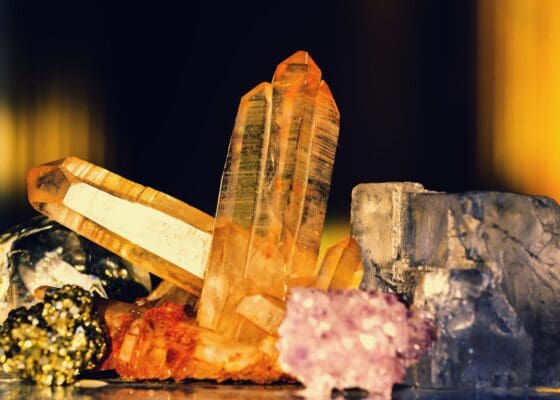

Once you’ve successfully unearthed gemstones in Kansas, the journey has only just begun. Proper handling, cleaning, and preservation of your finds are crucial steps to bring out their natural beauty and ensure they stand the test of time. Here’s a guide on how to treat your treasures with the care they deserve:
- Immediate Cleaning: After extraction, gently remove excess dirt or mud with a soft brush. This initial cleaning ensures that grit doesn’t scratch the surface of more delicate gemstones.
- Soaking: For gems encrusted with stubborn dirt or clay, soaking them in a bowl of water can help. Add a few drops of mild detergent to help break down the grime. Remember, some stones (like opals) are sensitive to water, so always research the best cleaning methods for your specific finds.
- Inspecting: Once cleaned, use a magnifying glass or loupe to inspect your gemstones. This will help identify any cracks, inclusions, or unique features which can determine their value and the best methods for further processing or storage.
- Polishing: Some gemstones can benefit from a gentle polish to enhance their luster. Soft cloths or specialized gem polishing kits can be used. However, always ensure that the polishing medium is softer than the gemstone to prevent scratches.
- Storage: Store your gemstones in individual pouches or boxes to avoid them scratching against each other. For particularly valuable or delicate gems, consider padded gem jars.
- Documentation: Maintain a record of where and when you found each gemstone. This adds to its provenance and can be fascinating for future reference or if you decide to sell your finds.
- Seek Expert Advice: If you believe you’ve found something exceptionally rare or valuable, consult a gemologist or an expert. They can provide insights into the stone’s quality, potential value, and advice on further processing or cutting.
- Displaying: If you wish to showcase your gemstones, consider investing in display cases or shadow boxes that protect them from dust and direct sunlight. Proper lighting can further highlight their beauty.
- Valuation: For gemstones you’re considering selling, getting them appraised can offer an idea of their market value. Ensure the appraiser has relevant credentials and experience with the type of gemstone you have.
- Ethical Considerations: If you’re planning on selling or trading your finds, ensure that you provide transparent information about the gem’s origin, any treatments it might have undergone, and its general history.
Unearthing gemstones is just the beginning of a captivating journey into the world of mineralogy. By handling your finds with care and reverence, you honor both the natural beauty of the gem and the effort you invested in retrieving it from the depths of Kansas’s rich terrain.
Famous Gemstone Finds in Kansas
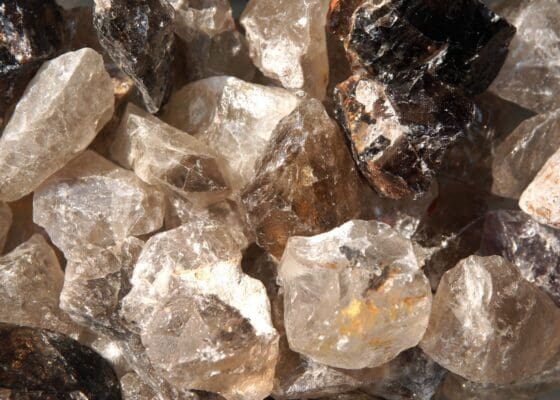

Kansas, the Sunflower State, boasts a fascinating history of mineralogical discoveries. While it may not be as famed as some states for its precious stones, it has gifted gem enthusiasts with a number of remarkable and noteworthy finds over the years. This section delves into the storied past of Kansas’s gemstone legacy, highlighting some of the most illustrious finds that have placed the state on the mineralogical map.
- The Gypsum Crystals of the Red Hills: These transparent, sword-like crystals, sometimes reaching lengths of several feet, have been a subject of awe for many mineral collectors. Their clarity and perfection are attributes that have made them some of the finest gypsum specimens in the world.
- Galena’s Lead and Zinc Gems: The city of Galena, named after the natural mineral form of lead sulfide, was once a thriving mining town. Amongst the lead, zinc minerals in crystalline forms have been found, capturing the attention of collectors and historians alike.
- The Smoky Quartz of the Smoky Hills: This region has provided stunning examples of smoky quartz crystals. Their dark, translucent appearance stands in contrast to the typical clear quartz, offering a unique addition to any gem enthusiast’s collection.
- Amber Discoveries: While not as abundant as in other regions, Kansas has had instances of amber discoveries. This fossilized tree resin is not only beautiful but also offers a glimpse into the prehistoric ecosystems, occasionally encapsulating ancient organisms.
- Jasper and Agate Varieties: These siliceous rocks, characterized by their colorful patterns and bands, have been unearthed in various Kansas locales. Each piece tells a geological story of sedimentation, pressure, and time.
- The Fossilized Oysters of Fencepost Limestone: While not gemstones in the traditional sense, these unique fossils are like nature’s jewelry, providing insights into the marine life that once existed in the region.
- Notable Meteorites: The Brenham meteorite, found near Greensburg, is one of the most significant pallasite meteorites ever discovered. Its mix of olivine crystals and nickel-iron makes it a star attraction for both gem collectors and space enthusiasts.
- The Curious Concretions: Rock City in Minneapolis, Kansas, showcases spherical concretions, some spanning up to 27 feet in circumference. Their mysterious formation process has been a subject of intrigue for geologists and gem hunters.
Kansas’s gemstone and mineral history is as varied as its landscape. From the rolling plains to its deep underground caverns, the state has revealed a cache of treasures over the years. Each discovery, whether by amateur collectors or professional geologists, adds a chapter to Kansas’s rich and colorful gemological tapestry.
Additional Gem Mining Opportunities
The allure of gem hunting isn’t confined to Kansas alone. The Sunflower State is surrounded by neighbors that also offer rich mineralogical landscapes, beckoning gem enthusiasts to expand their horizons and dig deeper into the heart of America. Here’s a snapshot of what awaits in neighboring states:
- Nebraska Gem Mining: Often overlooked, Nebraska boasts its own set of gem treasures. Agates and jaspers from its scenic byways are a collector’s delight.
- Missouri Gem Mining: The “Show-Me State” is renowned for its geodes brimming with sparkling crystals, offering a magical experience for those willing to crack them open.
- Oklahoma Gem Mining: With a diverse geological terrain, Oklahoma promises treasures like rose rocks, barite roses, and an array of beautiful crystals.
- Colorado Gem Mining: A mineralogical paradise, Colorado is home to precious stones such as aquamarine, topaz, and rhodochrosite, making it a must-visit for serious gem hunters.
- Iowa Gem Mining: The state offers geodes filled with mesmerizing formations, and the Keokuk region, in particular, is famed for its exquisite finds.
Venturing beyond Kansas’s borders, the American Midwest emerges as a gem-laden region, teeming with opportunities for discovery, wonder, and awe. Each state, with its unique geological tapestry, tells a story waiting to be unearthed by passionate gem enthusiasts.
Curious about gem mining? Our Gem Mining Near Me guide covers all bases!
Conclusion: Unearthed Allure and the Ultimate Gem Mining Kit
The allure of gem hunting in Kansas is undeniable. The Sunflower State’s rich geological tapestry offers both novices and experts the thrilling chance to connect with the earth in the most intimate manner. Every scoop of soil, every glinting mineral, tells tales of ancient times, geological transformations, and the endless wonders our planet holds.
Yet, as entrancing as these adventures can be, not everyone has the liberty to embark on them. Whether it’s due to time constraints, travel limitations, or the unpredictable elements of nature, the dream of gem mining can sometimes feel distant.
Enter the Ultimate Gem Mining Kit. Tailored for those who wish to experience the thrill of discovery from the comfort of their homes, this kit is a microcosm of the larger world of gemology. It offers a curated selection of raw gemstones, tools, and guides, allowing enthusiasts to uncover, study, and cherish their very own treasures. It’s not just a kit—it’s a gateway to the enchanting world of gems, making the magic of mining accessible to all.

